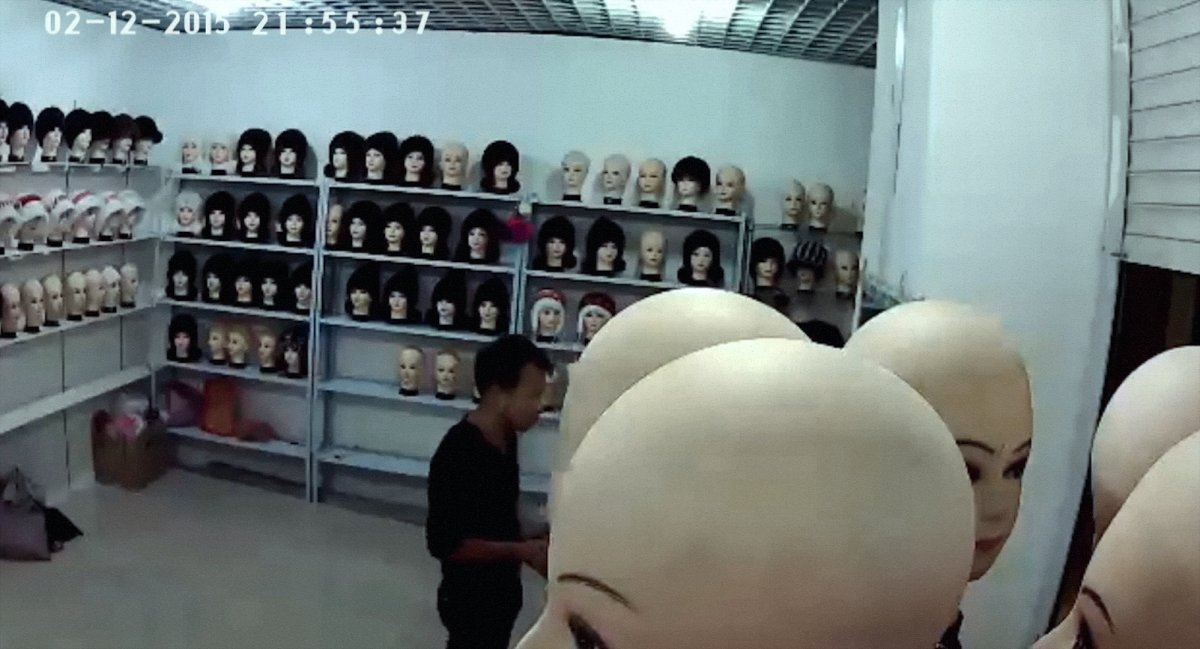State of the Arts: Xu Bing's 'Thought and Method' Explores Semantics and the Hijacking of Narrative at UCCA
State of the Arts is our regular arts column whereby we take a look at the newest moves in Beijing's creative scene and highlight art news as well as exhibitions, artists, and openings that you should seek out.
UCCA goes big almost every year with their summer exhibition, and this one is no exception. State of the Arts is glad to return from a long summer hiatus to talk about one of the shows that’s been getting a lot of attention since its very opening: Xu Bing’s Thought and Method, a major retrospective of one of the artists whose name is inextricably linked to the Chinese '85 New Wave Movement, which was a pivotal point for contemporary art in the country. The show encompasses over 60 works by Xu Bing, spanning four decades of artistic practice characterized, if we want to play the reductionist card, by the inquisitive and ever-pondering nature of his thinking along with his desire to master traditional techniques, culminating in new directions for Chinese art.

As an example of Xu's might, right at the entrance we’re greeted by perhaps his most famous work, Book From the Sky (天书, 1988). 天书 or "Heavenly Book" is originally a term that referred to certain religious texts, but it could also be understood as something abstruse or illegible – a sort of angelic text that’s not meant to be read by humans. Xu's Book appears to be in Chinese, but when examined more closely, anyone familiar with Chinese characters will see that they are in fact not part of the canon – they’ve been fashioned by the artist.
The book consists of four volumes totaling 604 pages, in which 4,000 woodblock-printed hanzi appear to convey an extensive message, that nonetheless means nada (or does it?). The artist’s mastery of traditional technique is here demonstrated by the minute details he considered in the production of the blocks used to print the book, all of which were made according to the rules of Song and Ming dynasty printing. The book itself is an elevated open scroll, resembling a sort of divine revelation that takes over the room, and obfuscates the minds of those who try to understand it through reading. Reminiscent of early encounters of "speaking in tongues" in Christianity, which was often not understood by its witnesses, the heavenly book raises questions regarding our perceptions of language, and its potential as a constricting structure due to its ability to shape thoughts.
Among other pieces that question language and identity, a separate room is dedicated to the continuous looping of the artist's first film, Dragonfly Eyes, considered the first to be entirely made up of images captured by CCTV. According to the artist, it explores the vast universe of images produced by the millions of cameras documenting the everyday (though not to say humdrum) lives of ordinary citizens. This reality is particularly striking in China, “where surveillance is pervasive and widely accepted,” and where the use of such images is not reserved only for government, businesses, and corporations, but is also available to anyone who cares to explore such material via video hosting and CCTV streaming sites.

To produce the movie, Xu Bing’s team downloaded hundreds of hours of online public surveillance videos and then edited and dubbed dialogue over them in order to tell a fictional story which the artist had conceptualized. The "characters" in the video are not represented by the same people throughout, but the sequence of images plays with the idea of continuity. The protagonist of the film is Qing Ting, a girl who leaves her monastic life at a Temple to take a job on a dairy farm. There, she meets Ke Fan, a young man who falls deeply in love with her but ends up going to prison for something he did to gain her favor. Later, when he’s freed, he can find no trace of her. In the grip of despair, Ke ends up taking drastic measures to "find" his beloved.

Telenovela-style plot aside, not to mention the sensitivities such a work might arouse in the people who cringe at the very idea that their images are floating out there to be seen by who-knows-who (which is not the case of the people in the footage, who willingly gave permission to reproduce the images), Xu Bing aims to raise questions about current trends in surveillance and how it might affect people in the long run, especially with the biometrics and facial recognition systems currently being implemented throughout the country. In the meantime, the artist simply states, “The entire world has become a gigantic studio.”
In all, the exhibition is rife with examples of how Xu’s witty thought processes can find technically challenging ways to address questions about linguistic processes or historical circumstance, which resonate not only in his homeland but also worldwide. The content is surprisingly accessible and not at all obscured by the dense narrative which could easily hijack the content when dealing with such deep themes.
Thought and Method is on view at the UCCA until Oct 18. Tickets are RMB 60 and discounts apply for seniors and students. For more information about the program that accompanies the exhibition, follow the UCCA’s official WeChat account (ID: UCCA_official) or visit their website.
Photos courtesy of UCCA







